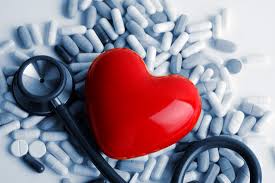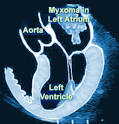
Diagnosed with Cancer? Your two greatest challenges are understanding cancer and understanding possible side effects from chemo and radiation. Knowledge is Power!
Learn about conventional, complementary, and integrative therapies.
Dealing with treatment side effects? Learn about evidence-based therapies to alleviate your symptoms.
Click the orange button to the right to learn more.
- You are here:
- Home »
- Blog »
- side effects ID and prevention »
- Cardiac Resynchronization Therapy
Cardiac Resynchronization Therapy

“Among patients with chemotherapy-induced cardiomyopathy eligible for cardiac resynchronization therapy, CRT improved left ventricular function and promoted reverse remodeling…”
Read the subheadline carefully. Among patients with CIC eligible for cardiac resynchronization therapy… It doesn’t say how many, how effective CRT is, nothing. Some patients with CIC improved with CRT.
My story is straight-forward. I am a long-term cancer survivor who was diagnosed with chemotherapy-induced cardiomyopathy in 1/19. I underwent lots of cardio-toxic chemotherapy in 1995. Fifteen years later, chronic atrial fibrillation aka afib. Twenty years later, chemotherapy-induced cardiomyopathy. Turns out my incurable cancer is only one of my problems. I am looking for therapies to manage my heart failure (HF).
My efforts in designing a therapy plan are complicated by the articles linked below and the FB group I belong to for cardiomyopathy survivors. Cardiac resynchronization therapy (CRT) can work well for people like me but then again, like all conventional FDA approved therapies, there can be serious side effects.
To quote the top article linked below, “the clinical composite response was unchanged in 50% but actually worsened in 16%; and 35% had a reduction in left ventricular (LV) end-systolic volume of 15% while 9% had LV volumes actually increased by >15%.4.”
Wow. That statement makes me question CRT. Further, the majority of posts on the cardiomyopathy FB group that I belong to is from people like me complaining of the short, long-term and late stage side effects of their own therapies.
I’m not saying that any single heart therapy is good or bad. I’m simply saying that HF patients must be thorough in their evaluation of all therapies, including CRT. Conventional cancer therapies taught me to look at the risks as carefully as the benefits. CRT has its share of risks for heart failure patients like me.
I’m also saying that I’ve researched a host of evidence-based but non-toxic HF therapies. From exercise to whole-body hyperthermia to CoQ10 to curcumin, there are many therapies for me to try before I assume the risks of CRT.
Have you been diagnosed with HF? Chemotherapy-induced cardiomyopathy? Scroll down the page, post a question or a comment if you would like to learn more about evidence-based, non-toxic therapies to improve your heart health.
Learn More About Chemotherapy-Induced Cardiomyopathy- click now
Thank you,
David Emerson
- Cancer Survivor
- Cancer Coach
- Director PeopleBeatingCancer
Chemotherapy-induced Cardiomyopathy- How long have I got?
Can cardiac resynchronization therapy (CRT) cause harm?
“However, it (CRT) does have potential adverse effects such as those associated with any pacemaker procedure (infection, lead dislodgement, perforation, etc.) but, in addition, it is also clear that not all patients improve, with ∼11–46% apparently failing to benefit from CRT (the rates are lower if clinical parameters are used and higher with echocardiographic measurements).3
Also, there has been suspicion that in some patients CRT may make the condition worse. In the recent PROSPECT (Predictors of Response to CRT) trial, the clinical composite response was unchanged in 50% but actually worsened in 16%; and 35% had a reduction in left ventricular (LV) end-systolic volume of 15% while 9% had LV volumes actually increased by >15%.4
The updated ESC guidelines recommend that CRT should be considered in patients with New York Heart Association functional class II–IV symptoms, LV ejection fraction ≤35%, and electrocardiographic (ECG) QRS widening of at least 120 ms.5
MADIT-CHIC: CRT beneficial in chemotherapy-induced cardiomyopathy
Although patients with chemotherapy-induced cardiomyopathy present with HF and have a 2-year survival rate lower than 50%, there had never been a systemic evaluation of CRT in this cohort…
“Even though cardiac resynchronization therapyhas been around for several decades, and there have been many randomized clinical trials, the population with chemotherapy-induced cardiomyopathy has not been represented at all…”
Singh and colleagues analyzed 30 patients with chemotherapy-induced cardiomyopathy (mean age, 64 years; 87% women) from 12 cardio-oncology programs who were indicated for CRT therapy, were implanted with a CRT device and underwent echocardiography at 6 months. The primary endpoint was change in LV ejection fraction at 6 months.
Most of the patients had been treated with anthracyclines, and all were treated for breast cancer (73%), lymphoma (20%) or sarcoma (7%), Singh said.
LVEF improved a mean of 10.6% at 6 months (standard deviation, 6.6; 95% CI, 8.2-13.9; P < .001), according to the researchers. Improvement was consistent regardless of sex, age, NYHA class, QRS or baseline LVEF.
In addition, LV end-systolic volume decreased 37 mL, LV end-diastolic volume decreased 31.9 mL, left atrial volume decreased 12.6 mL, LV mass decreased 31 g, LV end-systolic diameter decreased 0.6 mm and LV end-diastolic diameter decreased 0.4 mm (P < .001 for all), Singh said.
“We know that reverse remodeling is a predictor of long-term outcomes,” Singh said in an interview. “We can infer that these patients will do better in the long term, but we need studies to track this.” – by Erik Swain
Disclosure: The study was supported by an investigator-initiated research grant from Boston Scientific. Singh reports he consults for Abbott, Back Beat, Biotronik, Boston Scientific, EBR, Impulse Dynamics, Medtronic, Microport and Toray and received research grants from Abbott and Boston Scientific.



